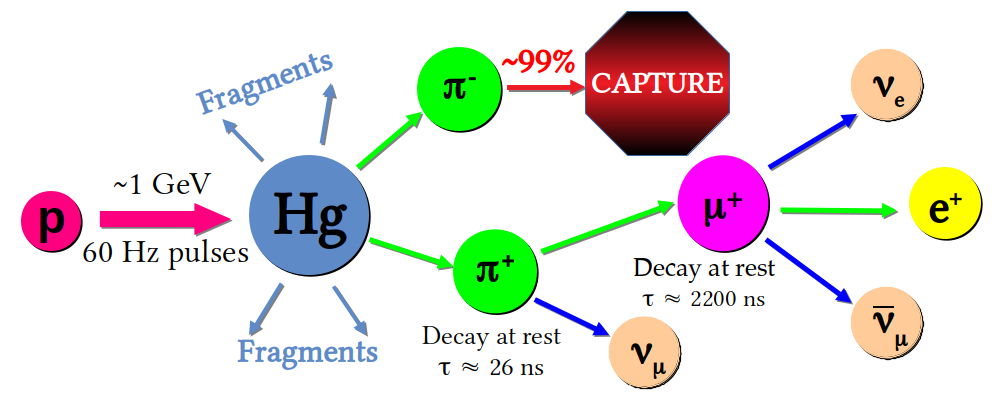less than 1 minute read
Our neutrino flux estimates come from simulating the neutrino production at the Spallation Neutron Source (SNS) at Oak Ridge National Laboratory in Tennesee. The SNS accelerates packets of protons to 1 GeV, then smashes them into a liquid mercury target. Think about the break shot in a pool game. You accelerate the cue ball, aim at the rack, and knock all the individual balls away from the initially organized setup. At the SNS, the proton is the cue ball and the nucleus of a single mercury atom is the rack, but our solids and stripes are unstable fragments of an atomic nucleus that decay into neutrinos: 

